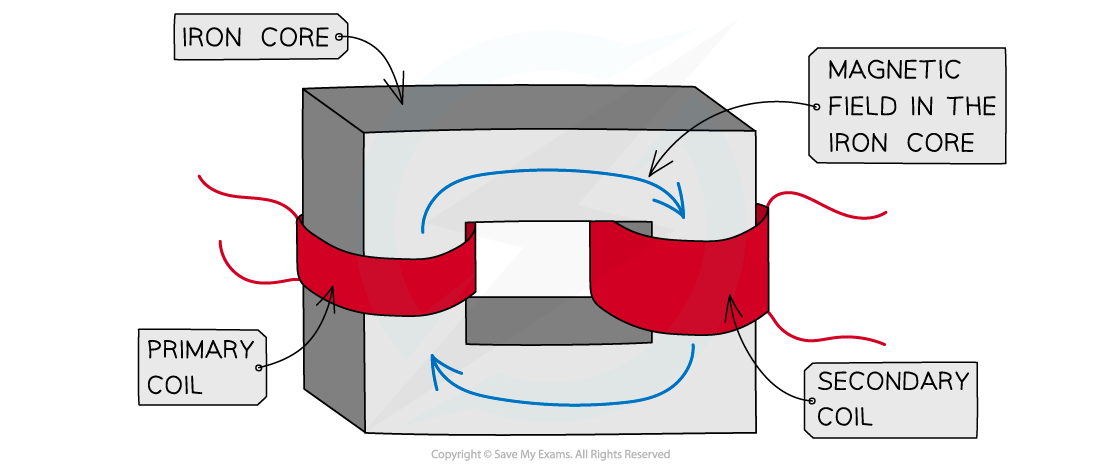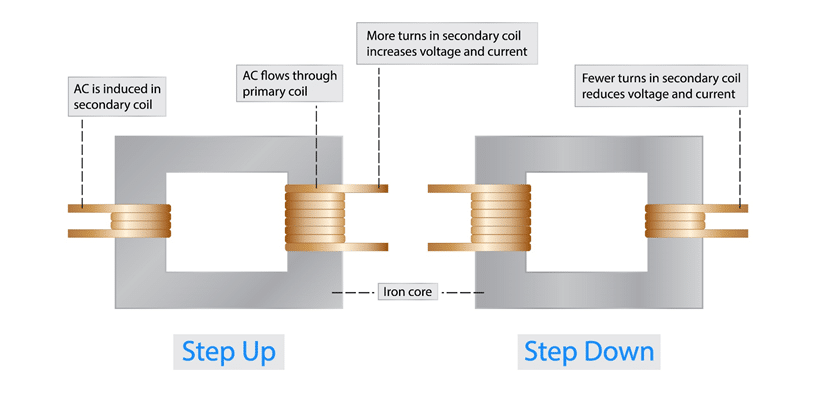Chapters
In electrical engineering, a revolutionary technology known as transformers has emerged. These ingenious devices have transformed how electricity is generated, transmitted, and distributed globally, playing an essential role in our modern lives. Transformers have become indispensable components of electrical systems, from powering our homes and offices to driving industrial machinery. In this article, we will delve into the fascinating world of transformers, exploring their structure, working principles, and their pivotal role in ensuring the efficient and reliable delivery of electricity to meet our ever-growing energy demands.

What is a Transformer?
We can define a transformer as:
"An electrical device that is used to amplify or reduce the potential difference of an alternating current is referred to as a transformer"
It can be accomplished through a generator effect.
Transformers play a vital role in changing the voltage of an alternating current (AC). This ability is crucial because the voltage produced by power stations is typically too low for efficient transmission. The primary function of transformers is to increase the voltage of electricity flowing through power lines. Doing so reduces the current, resulting in less energy wastage during transmission through cables.
Transformers effectively lower the current by utilizing a higher voltage, minimizing losses and maximizing efficiency during electricity transmission. When electricity reaches its destination, another transformer is employed to reduce the voltage to a safe level for use in homes and other buildings. By lowering the voltage before delivery, transformers ensure that home electricity is safe and prevents potential hazards.
Structure of a Transformer
A primary transformer has the following three parts:
- Core: The transformer consists of a laminated iron core that serves as a pathway for the magnetic flux. The core is typically made up of thin layers of iron or steel to minimize energy losses due to eddy currents.
- Primary Coil: The primary coil, also known as the input coil, is made of insulated copper wire and is connected to the input voltage source. When an AC flows through the primary coil, it creates an alternating magnetic field in the core.
- Secondary Coil: The secondary coil, known as the output coil, is wound around the same core as the primary coil. It consists of a different number of turns compared to the primary coil, which determines the voltage transformation ratio. The secondary coil is connected to the load or the device that requires a different voltage.

Types of Transformers
Transformers are versatile devices that efficiently transfer electrical energy between different voltage levels. They can be categorized into two main types: step-up and step-down.
- Step-up transformers: They increase the voltage level of an AC signal and are employed for long-distance transmission.
- Step-down transformers: These transformers decrease the voltage level and are used for residential and commercial applications.

Working Principle of a Transformer
Here is a basic working principle of a transformer:
- Transformers work on the principle of electromagnetic induction, which states that a changing magnetic field induces an electromotive force (EMF) in a nearby conductor.
- When an alternating current is supplied to the primary coil of a transformer, it continuously changes its direction.
- The changing current in the primary coil generates a dynamic magnetic field around it.
- The transformer's iron core quickly magnetizes, allowing the changing magnetic field to pass through.
- Consequently, a changing magnetic field is established within the secondary coil of the transformer.
- This changing magnetic field intersects the secondary coil's turns, resulting in a potential difference in induction.
- Since the magnetic field continues to change, the induced potential difference also alternates in nature.
- The frequency of the alternating potential difference matches that of the alternating current supplied to the primary coil.
- If the secondary coil is connected to a complete circuit, the alternating potential difference drives an alternating current to flow through it.
By utilizing these principles, transformers enable the efficient and safe transfer of electrical energy at different voltage levels.
Role of Transformers in Electrical Systems
Transformers are crucial in electrical systems, particularly in power transmission and distribution.
- Voltage Transformation: Transformers are primarily used to change the voltage of an alternating current (AC). Depending on the application, they can step up (increase) or step down (decrease) the voltage level. This voltage transformation is essential for efficient power transmission and distribution.
- Power Distribution: Transformers enable electrical power distribution from power stations to homes, businesses, and other facilities. High-voltage power generated at power stations is stepped up using transformers for efficient transmission over long distances through power lines.
- Efficiency Improvement: By increasing the voltage for transmission, transformers reduce the current flowing through the power lines. Since power loss in a wire is proportional to the square of the current, reducing the current lowers energy wastage and improves overall system efficiency.
- Safety Considerations: Transformers also play a vital role in ensuring electrical safety. Before electricity is supplied to homes and other buildings, transformers near the premises step down the voltage to safe levels, preventing potential hazards and electrical accidents.
- Magnetic Induction: Transformers operate based on the principle of electromagnetic induction. When an alternating current flows through the primary coil of a transformer, it produces a changing magnetic field that induces a voltage in the secondary coil. This principle enables the efficient transfer of energy between the coils.
- Core Material and Design: Transformers consist of a laminated iron or steel core, which provides a path for the magnetic field. The core's design reduces energy losses due to eddy currents and ensures efficient magnetic flux transfer between the coils.
- Conservation of Energy: Transformers exemplify the principle of conservation of energy. While the voltage can be changed, the total power remains constant (ignoring losses). This conservation allows power to be efficiently distributed and utilized throughout an electrical system.













You are the best,, coz you have gotten content about the topics
Hello ! Glad to hear that you’ve found the content useful!